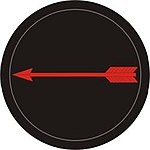m (Remove some templates. interwiki links, delink non military terms, cleanup and move Wikipedia link above categories, replaced: == References == {{Reflist}} == External links == * [http://www.army.mil/professionalwriting/volumes/volume3/april_200...) |
m (→External links: Remove some templates. interwiki links, delink non military terms, add link to Wikipedia and cleanup) |
||
| Line 105: | Line 105: | ||
* [http://www.army.mil/standto/archive/2010/04/08/ STAND TO!] |
* [http://www.army.mil/standto/archive/2010/04/08/ STAND TO!] |
||
* [http://www.kmimediagroup.com/mt2-home/299-mt2-2011-volume-16-issue-1-february/3885-us-army-asymmetric-warfare-group.html Military Training & Technology: MT2 2011 Volume: 16 Issue: 1 (February)] |
* [http://www.kmimediagroup.com/mt2-home/299-mt2-2011-volume-16-issue-1-february/3885-us-army-asymmetric-warfare-group.html Military Training & Technology: MT2 2011 Volume: 16 Issue: 1 (February)] |
||
| − | |||
| − | {{US Army navbox}} |
||
| − | |||
{{Wikipedia|Asymmetric Warfare Group}} |
{{Wikipedia|Asymmetric Warfare Group}} |
||
Revision as of 04:03, 23 April 2014
| Asymmetric Warfare Group | |
|---|---|
 Asymmetric Warfare Group shoulder sleeve insignia | |
| Active | 2004 - present |
| Country | United States |
| Branch |
|
| Type | Special Mission Unit |
| Role | Advisory and testing |
| Size | ~ 350 |
| Part of |
|
| Garrison/HQ | Fort Meade, Maryland |
| Nickname(s) | AWG |
| Motto(s) | "Think. Adapt. Anticipate." |
| Engagements |
Iraq War War in Afghanistan |
| Commanders | |
| Current commander | Colonel John P. Petkosek |
| Insignia | |
| Distinctive unit insignia |
 |
The Asymmetric Warfare Group is a United States Army Special Mission Unit created during the War on Terrorism to mitigate various threats with regard to asymmetric warfare. The unit is headquartered at Fort Meade, Maryland and has a training facility at Fort A.P. Hill, Virginia. The unit provides the linkage between Training and Doctrine Command (TRADOC) and the operational Army, and reports directly to the commanding general of TRADOC.[1]
Organization
The Asymmetric Warfare Group is made up by a headquarters and headquarters detachment and four squadrons, each one led by a Lieutenant Colonel:
- Able Squadron (Tactical Operations)
- Baker Squadron (Technical Operations)
- Charlie Squadron (Selections and Training)
- Dog Squadron (Concepts Integration)
Each squadron is subsequently divided into troops commanded by Majors.
Mission
The U.S. Army Asymmetric Warfare Group provides operational advisory support to Army and Joint Force Commanders globally to enhance Soldier survivability, combat effectiveness and enable the defeat of current and emerging threats in support of Unified Land Operations.
Key Tasks
- Support Army and Joint Force Commanders by advising and assisting pre-deployment and in-theater forces to reduce vulnerabilities to current and emerging threats.
- Deploy AWG forces world-wide to observe and assess threats and friendly interaction to identify offensive and defensive countermeasures to defeat current and emerging threats.
- Identify, develop, transition and disseminate solutions to threats through best practices, a robust reach back capability to problem solvers and countermeasure technologies
- Advance Army innovations and adaptation of the operating force to be more agile, versatile and lethal.
- Develop adaptive leaders through a continuous learning organization.
History
The AWG traces its origin to the 2003 Army Improvised Explosive Device (IED) Task Force. The Army G3 directed the establishment of the Asymmetric Warfare Regiment (AWR) in June 2004. The AWR eventually changed its title to the Asymmetric Warfare Group (AWG).
References
External links
- United States Army Professional Writing Collection description of unit
- Official U.S. Army Asymmetric Warfare Group website
- STAND TO!
- Military Training & Technology: MT2 2011 Volume: 16 Issue: 1 (February)
The original article can be found at Asymmetric Warfare Group and the edit history here.